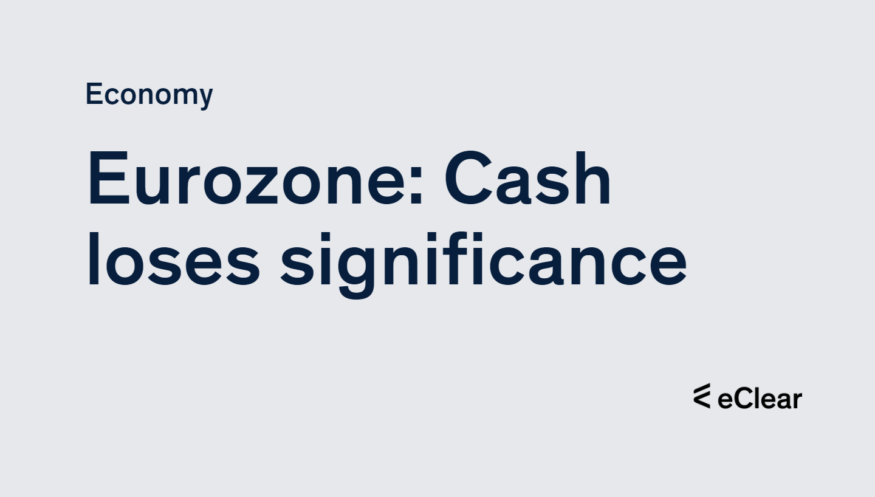- Cash remains the most popular means of payment for smaller amounts at the shop checkout, but is gradually losing significance
- Card payments are increasingly contactless
- According to the study, the use of cashless payment methods has increased due to corona pandemic
Consumers in the euro area are gradually switching to card payments when paying smaller amounts at the shop checkout. However, cash was still the most commonly used means of payment at the end of 2019. This is according to the study published by the European Central Bank (ECB) in early December 2022.
Last year, eurozone adults made 73% of their point-of-sale and interpersonal payments in cash (48% by volume). In a previous study by the ECB in 2016, this figure was 79% of transactions and 54% of volume.
The share of cards used for smaller amounts at the point of sale has increased by five percentage points over these three years, from 19% to 24% of transactions (or 41% of volume). Contactless technology was used in almost four out of ten card transactions in 2019.
Online purchases by eurozone adult consumers mainly were paid by card (49%), with one in four online transactions using electronic payment solutions. Four of ten bills were paid by direct debit and two by bank transfer.
To understand the potential impact of the current pandemic on consumers’ payment behaviour, the ECB expanded its 2019 study with an ad hoc survey conducted in July 2020. Four out of ten respondents said they had used cash less frequently since the pandemic’s start. While most expected to maintain this after the pandemic, the long-term impact on payment behaviour is still uncertain.
“For us, it is extremely important that consumers are free to choose their payment method. Therefore, we aim to ensure the acceptance of and access to cash in the euro area while promoting innovation in electronic payments. This includes our work on possibly introducing a digital euro,” said ECB Executive Board member Fabio Panetta.
The data will help the ECB and the euro area national central banks better understand consumer demand and market trends. They will also help the Euro system implement its retail payment and cash strategies. These two strategies include promoting competitive, innovative and resilient payment solutions for the pan-European market and the commitment that cash will continue to be accessible and accepted as a means of payment throughout the euro area.
Source: bundesbank.de







